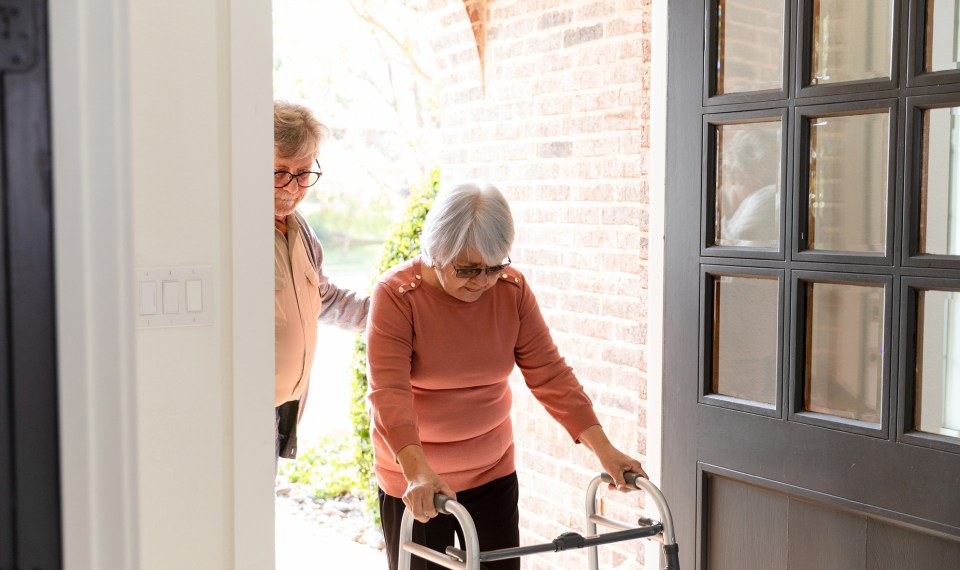As a parent or loved one gets older, they may find it a little more challenging to get around safely. Maybe a short walk leaves them winded or their balance isn’t what it used to be. If that’s the case for your loved one, an assistive walking device could be needed to help them stay mobile and prevent a fall. Falls are a leading cause of hospitalizations for older adults and often lead to a loss of independence.
If your loved one is experiencing difficulty moving around their environment, maybe it’s time to consider the use of a walker, a cane or even a wheelchair.
Signs Your Loved One Needs an Assistive Walking Device
The following are a few warning signs to look for when considering an assistive device:
- They hold onto walls and furniture when walking around
- They had a recent fall
- They have unexplainable bruising (likely from bumping into furniture)
- They have complained about numb feet, also known as neuropathy
If your loved one has these signs, they may benefit from a walking device to help them balance and stay mobile. It can give them confidence and increase their activity. It will also make them feel safe. In short, their quality of life will improve.
Types of Assistive Devices
Many people may benefit from a straight cane or walking stick for balance, while others may benefit from a four-wheel walker with a seat and basket, also known as a rollator. The four-wheel walker will provide the walking support your family member may need while also providing a basket for carrying belongings, and it also has the bonus of a seat to sit on if they are fatigued.
Another option is a standard rolling walker. This device is lightweight, has two front wheels and is more stable than a cane or rollator. The standard rolling walker is best for someone who has balance issues and is unable to safely use a rollator.
The last option would be a wheelchair. A standard wheelchair would be for a family member who is unable to walk or can only walk short distances. Another choice is a transport wheelchair. The transport wheelchair is lightweight and does not have large wheels and hand rims, so an aide or family member must be available to transport the patient. A transport wheelchair can be ideal for pushing a family member outside and to doctor’s appointments, as well as at malls and even theme parks.
Determining the Best Device
When deciding on an appropriate device for your loved one, consider their environment, such as the width of doors and the types of indoor and outdoor surfaces in and around thier home. For example, a rollator walker has four wheels and will roll across carpets and sidewalks much easier than a standard walker, whereas a straight cane will be easier to use on cobblestone or uneven surfaces.
Medicare typically provides coverage for an assistive device every five years. Talk with your family doctor and Medicare for more information regarding coverage. Once you have decided to get an assistive walking device, the height of the device must be setup appropriately. The user should stand up straight and relax their arms to their sides. The walker or cane should be at wrist level. When holding the device, the elbows should have a slight bend.
Choosing the most appropriate device is situational. Many people choose to have a cane for the house and a rollator to walk outside. Other people have a rolling walker at home but have a transport wheelchair for long distances.
Most importantly, if your family member is having balance problems, is falling or seems to walk around the house from dresser to chair to table to counter, consider getting them an assistive device for walking.
If your family member is hesitant to use a walking device, ask them to consider the costs of not using one, and weigh the risks versus the benefits. If you have safety concerns about your loved one or yourself, talk with your doctor. A physical therapist can also assist with balance concerns and the selection of the most appropriate walking device.
The content of this site is for informational purposes only and should not be taken as professional medical advice. Always seek the advice of your physician or other qualified healthcare provider with any questions you may have regarding any medical conditions or treatments.



